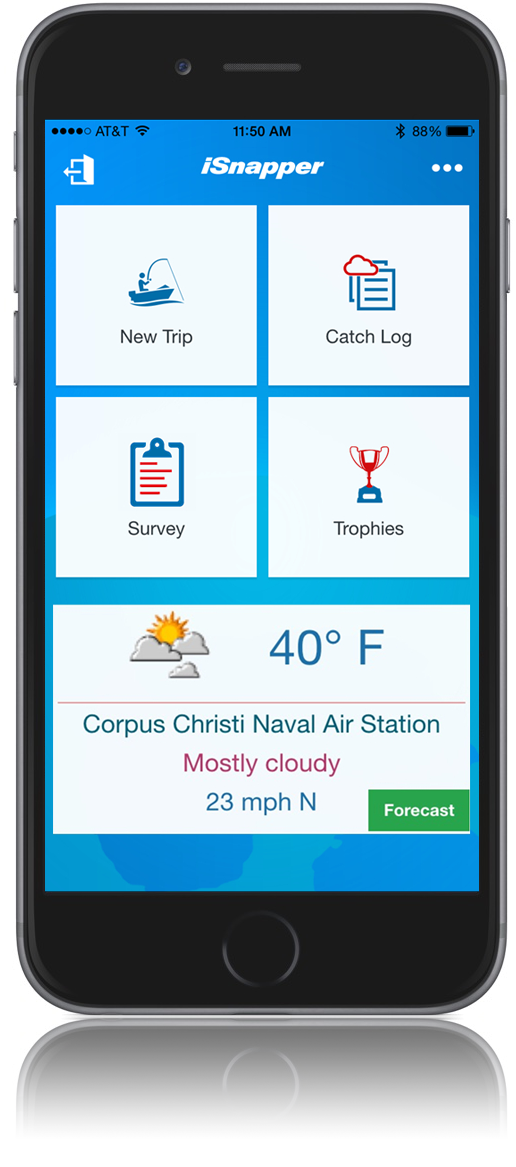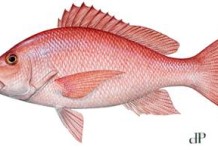Red snapper fishing in Texas and across the Gulf of Mexico is a hot-button topic, full of firebrand reproaches and approaches for past, present and future management of one of the most popular fisheries in the world. However, in moving forward, technology will play a large part in deciding how to best conserve and set season dates for hundreds of thousands of anglers from Corpus Christi to the Florida Keys.
Among the largest issues facing the recreational and charter-fishing industries is finding the right way to correctly and historically log catch shares, which in a quota system is vital to deciphering adequately who gets how much of the species that’s among the most-sought for its prime fillets. In hopes of getting back to a single stream of reliable data, the Texas Parks & Wildlife Department and its coastal fisheries leaders and biologists have partnered with the Center for Sportfish Science and Conservation at the Harte Research Institute for Gulf of Mexico Studies on iSnapper, an initiative focusing on using a smartphone app to log daily red snapper catches by private anglers not jumping on a party boat to nab their two fish daily from the Gulf.
“Private recreational catch is a major source of uncertainty for fisheries managers, and as a result large buffers are applied during the stock assessment process that reduce season length,” the documentation reads on the Center’s website, and “any additional data gathered can reduce this uncertainly and potentially improve access to the fishery.”
While not a mandatory part of a trip, those with a huge stake in securing more research funding and others who hope to continue to be part of the federal regulation process hope that the ease of use of an app will break down past barriers involving the reporting of recreational catch totals. The app and state data collection system are set up for one data entry per trip, documenting the total number of anglers and fish put on ice by each boat. To become a registered user, you must include vessel registration numbers during the sign-up process for correct validation. If you are fishing with a private angler on their boat, you still will have the ability to create an account with their permission and log the catch for the boat.
iSnapper’s use by TPWD is aimed at streamlining the reporting process, which previously urged private anglers to visit the agency’s website to complete an online survey. In addition to being used in conjunction with harvest monitoring programs, the overall effort is focused on future harvest monitoring programs, while also serving as an indicator of the health of the red snapper fishery off Texas shores and elsewhere.
Texas and other Gulf states, cooperatively with National Marine Fisheries Service, manage red snapper in federal waters. One of the key pieces of information in the management of the snapper fishery is the annual recreational harvest.
The bag limit in federal waters remains two fish that are at least 16 inches long, while the daily framework in Texas state waters — where fishing is allowed year-round — is four fish which must be at least 15 inches. However, more than 95 percent of the red snapper landed in Texas come from federal waters, according to TPWD figures. Most of that catch – about 80 percent – comes from head boats which take out numerous paying clients offshore.
In Texas federal waters begin 9 nautical miles from the coast and extend 200 nautical miles.
TPWD also performs routine dockside creel surveys to monitor the landings and fishing effort for a variety of species along the coast, something anglers are still urged to help document, but the app is designed in mind to take much of the human legwork and effort out of the process.
This year’s recreational red snapper season in the Gulf of Mexico runs 10 days overall, beginning June 1. That framework is marked for the first time by “sector separation,” a regulation that defines how long recreational sector anglers and federal charter vessel/headboat (for-hire) anglers can catch snapper.
Last year’s Gulf red snapper season was shortened to just nine days for both private anglers and charter boats.





















